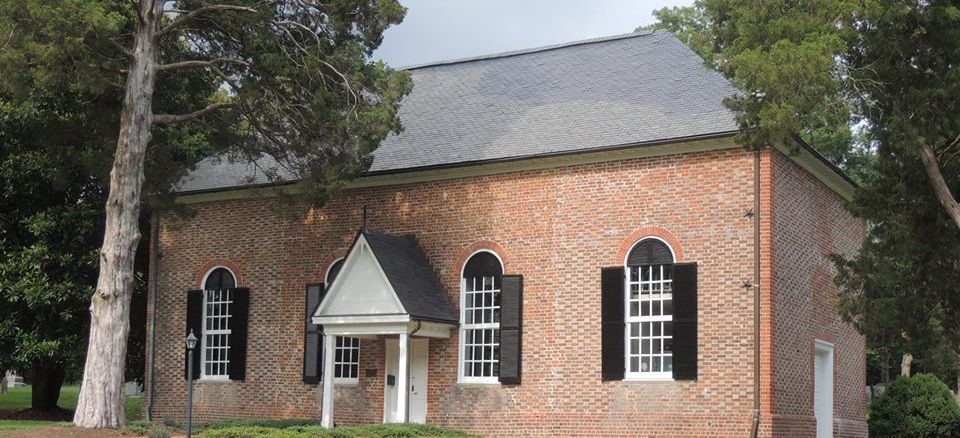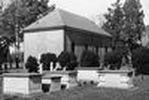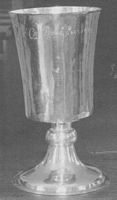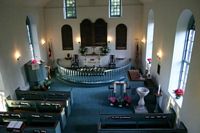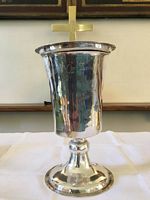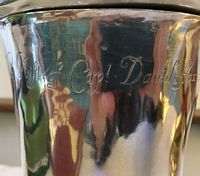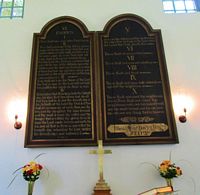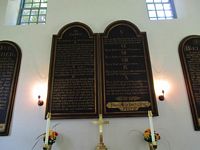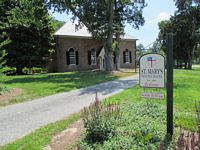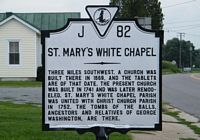Saint Mary's Whitechapel
Saint Mary's Whitechapel was founded in 1669. David Fox, Sr. is thought to have provided the land and the name is thought to have come from his home church in England. A petition to the county court on September 18th, 1669 asked for a new road to be laid out for the church. Later that same year David Fox, Sr. wrote his will and left 20 pounds sterling to the church to used for glazing bricks and the purchase of a communion cup. The cup is still in use today and is inscribed with "The gift of Capt. David Fox, 1669."
Christ Church and Whitechapel were the first churches to serve Lancaster County, both preaching the same religion as the Church of England. In the early colonial era it was required by law and penalty of fine that every resident of Virginia had to attend church at least once a month. Rev. Benjamin Doggett immigrated to the Northern Neck with his family to serve at Christ Church and is said to have been involved in the founding of Whitechapel. He ministered at both churches from before 1670 until his death in 1681. In Benjamin's will he instructed that he be buried beside the pulpit at Whitechapel. David Fox, Jr. also left a gift to the church, his will from 1702 presented a Decalogue with gold lettering to Whitechapel. William Ball, the great-grandfather of president George Washington was another prominent early member of Whitechapel.
Christ Church and Whitechapel were both first built as wooden buildings. By 1734 Christ Church had been rebuilt as the brick building that still stands today. In 1739 Whitechapel entered into a agreement with a bricklayer named James Jones to build a new church for 37,400 pounds of tobacco. It is thought the new building was built 100 yards away from the original building, it is unknown if the remains of Benjamin Doggett were transferred to the new site. Jones built the church in the cruciform design as Christ Church and completed the work by late 1740. As he was finishing his work Jones was contracted by the county to build a courthouse which was used from 1740 into the 1840s. Rev. John Bell was rector at Whitechapel when the new church house was built, he died in 1743. Rev. David Currie followed and served nearly 50 years.
At the outbreak of the Revolutionary the Church of England quickly fell from favor. Baptist, Methodist and Presbyterian circuit riders began preaching in Lancaster County. As many Anglican pastors left their churches and sailed back to England, at Whitechapel Rev. Currie remained. Currie even provided patriotic support during the war by donating beef and a horse to the army. Currie kept the church going until his death in 1791.
In the early 1800s services stopped being held at Whitechapel and the building fell into a state of disrepair. In 1832 a group of persons "friendly to the Protestant Episcopal Church" began work to reopen the church. The east and west wings of the church were in the worst shape and were taken down so that the bricks could be used the repair and join the north and south wings. So the cruciform shaped church became the rectangle that remains today. At the start of the Civil War the grounds at St. Mary's Whitechapel were used as and encampment for the Lancaster County home guard.
Jessie Ball duPont was a generous donor to the church. Many of her ancestors were buried there, and her gifts included restoring old graves in addition to the historic preservation of the building. Eventually a preservation fund was set up in her name from the gifts she contributed and a meeting house was built beside the church and named in her honor. In the year of it's 300th anniversary, 1969, Whitechapel was named to the state and national Register of Historic Places.
Map:

Comments:

Sources:

- Find-A-Grave
- For Love of Family, Peter T. Baron, Jr. (2012)
- Lancaster County: Where the River Meets the Bay, Jett (2003)
- Northern Neck of Virginia Historical Magazine, Vol. 31, No. 1, 1981
Future 2:

Future 3:

Future 4:

Future 3:


